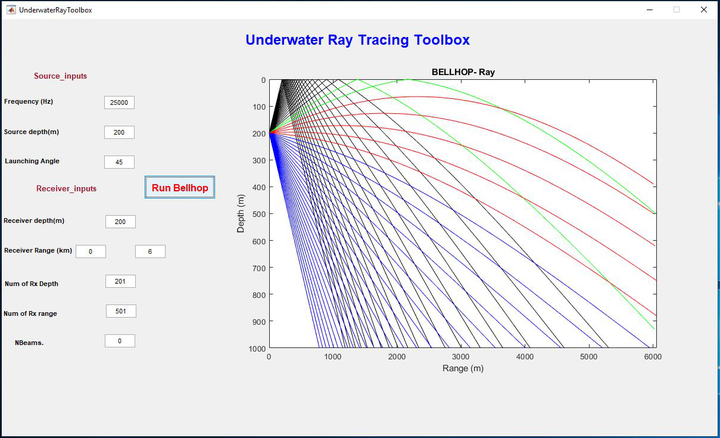Underwater channel characterization for shallow water multi-domain communications
 Underwater Ray-Tracing Toolbox (URTT)
Underwater Ray-Tracing Toolbox (URTT)
Abstract
The underwater acoustic (UWA) channel is challenging as a propagation medium for wireless transmissions due to its spatial-temporal variability from high ambient noise, limited bandwidth, frequency-dependent losses, variable latency and time-space-frequency variable multi-path effects. Prior to deploying marine robots, the UWA channel should be characterized for its local sound velocity profile, at both source and receiver(s) depths, bottom cover (e.g. sand, silt, mud, etc.) and bathymetry. At the transmission end, it matters the signal’s carrier frequency, bandwidth, and pulse characteristics. With knowledge of both, it is possible to assess the operational communications range. This is especially so to develop and evaluate new medium access control (MAC) and routing level protocols. As a part of a project, three heterogeneous marine robots (unmanned underwater vehicle (UUV), unmanned surface vehicle (USV), and unmanned aerial vehicle (UAV)) collaboratively acquired situational awareness on a non-responsive floating target. This paper reports on the communications aspect. It presents models that assess the impact of the relative placement between a transmitter (USV) and receiver (UUV) through ray tracing and several sea-bed environmental/UWA channel conditions on operational communication range between UUV \& USV.